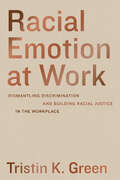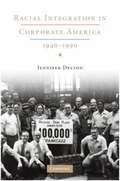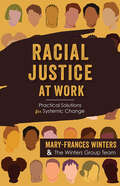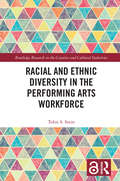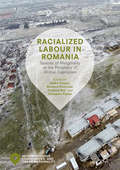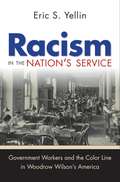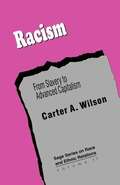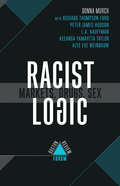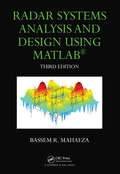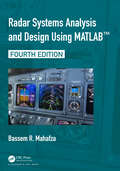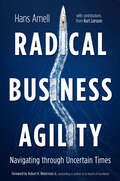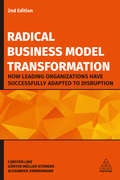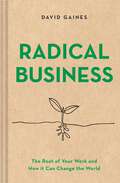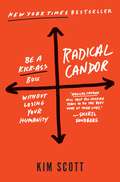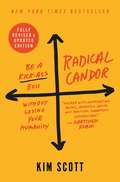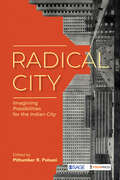- Table View
- List View
Racial Discrimination on Airbnb: The Role of Platform Design
by Michael Luca Hyunjin Kim Scott Stern Devin CookThe case emphasizes the vital role played by trust among guests and hosts in the platform's success. Airbnb's co-founder and CEO Brian Chesky is quoted explaining, "Access is built on trust, and trust is built on transparency. When you remove anonymity, it brings out the best in people. We believe anonymity has no place in the future of Airbnb or the sharing economy." However, in the spring of 2016, growing evidence of widespread racial discrimination on the platform put Airbnb at risk of losing users' trust. Chesky was faced with the challenge of reducing discrimination on the Airbnb platform while maintaining an environment of trust. Students are presented with background and historical information about Airbnb that emphasizes the company's platform design choices and focus on designing for trust. Students are then presented with experimental research results providing initial evidence of systematic racial discrimination on the platform and showing that guests with distinctively African-American names are accepted roughly 16% less often than those with distinctively white names (from a base acceptance rate of about 50%). The case study goes on to detail responses to the publication of this research, which included media scrutiny, anger expressed on social media and elsewhere, and pressure from The Congressional Black Caucus of the United States Congress. Students are then given the opportunity to explore the experimental approach employed by Airbnb managers, as well as how experimental data helped determine that discrimination was present on the platform. The case presents students an opportunity to think about whether and how experimental data can be used to help Chesky and Airbnb address discrimination and maintain trust on the platform. Students also explore how platform design choices can result in unintended consequences, how experimental design choices can create blind spots, and the importance of mapping to management decisions when designing experiments.
Racial Emotion at Work: Dismantling Discrimination and Building Racial Justice in the Workplace
by Tristin K. GreenThis timely book unravels race and emotion in the workplace—exploring why racial emotion is often left out of equity conversations and why we must confront it.Racial Emotion at Work is an invitation to understand our own emotions and associated behaviors around race—and much more. With this surprising and timely book, Tristin K. Green takes us beyond diversity trainings and other individualized solutions to discrimination and inequality in employment, calling for sweeping changes in how the law and work organizations treat and shape racial emotions. Green provides readers with the latest research on racial emotions in interracial interactions and ties this research to thinking about discrimination and disadvantage at work. We see how our racial emotions can result in discrimination, and how our institutions—the law and work organizations—value and skew our racial emotions in ways that place the brunt of negative consequences on people of color. It turns out we need to reset our institutional and not just our personal radars on racial emotion to advance racial justice. Racial Emotion at Work shows how we can rise to the task.
Racial Integration in Corporate America, 1940–1990
by Jennifer DeltonIn the space of about thirty years - from 1964 to 1994 - American corporations abandoned racially exclusionary employment policies and embraced some form of affirmative action to diversify their workforces. It was an extraordinary transformation, which most historians attribute to civil rights activists, federal legislation, and labor unions. This is the first book to examine the role of corporations in that transformation. Whereas others emphasize corporate obstruction, this book argues that there were corporate executives and managers who promoted fair employment and equal employment opportunity long before the federal government required it, and who thereby helped prepare the corporate world for racial integration. The book examines the pioneering corporations that experimented with integration in the 1940s and 1950s, as well as corporate responses to the civil rights movement and urban crisis in the 1960s and 1970s and the widespread adoption of affirmative action in the 1980s and 1990s.
Racial Justice at Work: Practical Solutions for Systemic Change
by Mary-Frances Winters The Winters Group TeamCreating justice-centered organizations is the next frontier in DEI. This book shows how to go beyond compliance to address harm, share power, and create equity. Traditional DEI work has not succeeded at dismantling systems that perpetuate harm and exclude BIPOC groups. Proponents of DEI have put too much focus on HR solutions, such as increasing representation, and not enough emphasis on changing the deeper organizational systems that perpetuate inequities-in other words, on justice. DEIJ work diverges from traditional metrics-driven DEI work and requires a new approach to effectively dismantle power structures.This thought-provoking, solutions-oriented book offers strategic advice on how to adopt a justice mindset, anticipate and address resistance, shift power dynamics, and create a psychologically safe organizational culture. Individual chapters provide pragmatic how-to guides to implementing justice-centered practices in recruitment and hiring, data collection and analysis, learning and development, marketing and advertising, procurement, philanthropy, and more. DEIJ pioneer Mary-Frances Winters and her coauthors address some of the most significant aspects of adding a justice focus to diversity work, showing how to create a workplace culture where equity is not a checklist of performative actions but a lived reality.
Racial and Ethnic Diversity in the Performing Arts Workforce (Routledge Research in the Creative and Cultural Industries)
by Tobie S. SteinRacial and Ethnic Diversity in the Performing Arts Workforce examines the systemic and institutional barriers and individual biases that continue to perpetuate a predominately White nonprofit performing arts workforce in the United States. Workforce diversity, for purposes of this book, is defined as racial and ethnic diversity among workforce participants and stakeholders in the performing arts, including employees, artists, board members, funders, donors, educators, audience, and community members. The research explicitly uncovers the sociological and psychological reasons for inequitable workforce policies and practices within the historically White nonprofit performing arts sector, and provides examples of the ways in which transformative leaders, sharing a multiplicity of cultural backgrounds, can collaboratively and collectively create and produce a culturally plural community-centered workforce in the performing arts. Chapter 1 of this book is freely available as a downloadable Open Access PDF at http://www.taylorfrancis.com under a Creative Commons Attribution-Non Commercial-No Derivatives (CC-BY-NC-ND) 4.0 license.
Racialized Labour in Romania: Spaces Of Marginality At The Periphery Of Global Capitalism (Neighborhoods, Communities, And Urban Marginality Series)
by Enikő Vincze Norbert Petrovici Cristina Raț Giovanni PickerThis book critically examines the making and persistence of impoverished areas at the margins of Romanian cities since the late 1980s. Through their historical outlook on political economy and social policy, combined with media and discourse analysis, the eight essays of Racialized Labour in Romania forge new and cutting-edge perspectives on how social class formation, spatial marginalization and racialization intersect. The empirical focus on cities and the labour and the plight of the Roma in Central and Eastern Europe provides a vantage point for establishing connections between urban and global peripheries, and for reimagining the global order from its margins. The book will appeal to scholars, students, journalists and policy makers interested in Labour; Race and Ethnicity; Cities; Poverty; Social Policy; Political Economy and European Studies.
Racism in the Nation's Service
by Eric S. YellinBetween the 1880s and 1910s, thousands of African Americans passed civil service exams and became employed in the executive offices of the federal government. However, by 1920, promotions to well-paying federal jobs had nearly vanished for black workers. Eric S. Yellin argues that the Wilson administration's successful 1913 drive to segregate the federal government was a pivotal episode in the age of progressive politics. Yellin investigates how the enactment of this policy, based on Progressives' demands for whiteness in government, imposed a color line on American opportunity and implicated Washington in the economic limitation of African Americans for decades to come.Using vivid accounts of the struggles and protests of African American government employees, Yellin reveals the racism at the heart of the era's reform politics. He illuminates the nineteenth-century world of black professional labor and social mobility in Washington, D.C., and uncovers the Wilson administration's progressive justifications for unraveling that world. From the hopeful days following emancipation to the white-supremacist "normalcy" of the 1920s, Yellin traces the competing political ideas, politicians, and ordinary government workers who created "federal segregation."
Racism, Microaggressions, and Allyship in Health Care: A Narrative Approach to Learning
by Ifeolorunbode Adebambo Adam T. PerzynskiThis book provides a complete teaching companion that an organization can use to educate on the hard topics of racism, antiracism, microaggressions, bias and allyships. It explores the experience of underrepresented minority trainees and other healthcare professionals with racism and allyship. Talking about racism is challenging due to the amount of associated pain, suffering and strong emotions. Creating a respectful, open, interactive and safe place to have conversations, teach and learn is paramount in order to produce change in the healthcare environment. Using narratives to facilitate difficult conversations is familiar to healthcare professionals, and with humility reminds us that we are all "patients" that also need healing. Narratives promote self-reflection and have the power to change beliefs and attitudes. The volume opens with introductory chapters that focus on definitions, historical context and the current climate of racism, bias, microaggressions and allyship. Narratives are presented in 42 chapters organized by themes of racism, microaggression, allyship, sexism and health equity. Each narrative is an honest representation of real-life encounters within the healthcare system. The narratives include personal experiences of racism in health care, explicit and implicit bias, microaggressions and experiences of anti-racist efforts and allyship. There are clear instructions on how to use the narratives for teaching and to facilitate discussion. Among the book's benefits: Explicitly includes the perspective of trainees and administration; Engages learners in affective and emotional learning as well as practical and cognitive learning modes; Provides a series of historical cases, consistent with the preferred and traditional learning modality of health professions; Includes an array of activities, tools and learning exercises. Racism, Microaggressions and Allyship in Health Care is a timely and essential text for medical student and resident training, graduate and undergraduate nursing programs, advanced practice care providers, clinical faculty and staff development, CME workshops, public health programs, and hospital administration. It also is a useful resource for undergraduate pre-medicine programs, structural racism courses, and advanced social science courses (health disparities, medical sociology, inequality, healthcare policy).
Racism: From Slavery to Advanced Capitalism
by Carter A. WilsonRacism: From Slavery to Advanced Capitalism, is an important example of how much new ground must be broken in regard to the historical social scientific study of racism,
Racist Logic: Markets, Drugs, Sex (Boston Review)
by Donna MurchThe history of international banking, the commodification of black masculinity, the buying and selling of women's eggs, Michelle Obama's dubious advice to black youth, and the workings of affirmative action at elite universities viewed through the lens of racial capitalism. In Racist Logic, lead essayist Donna Murch writes that “historically, the division between 'dope' and medicine was the race and class of users.” By using the concept of “racial capitalism” to examine the opioid crisis alongside the War on Drugs, Murch brings an otherwise familiar story into new territory. To understand the twisted logic that created the divergent responses to drug use—succor and sympathy for white users, prison and expulsion for people of color—Murch shows how a racialized regime of drug prohibitions led Purdue Pharma to market OxyContin specifically to whites. Alongside Murch, contributors consider how racial capitalism helps us understand the history of international banking, the commodification of black masculinity, the buying and selling of women's eggs, Michelle Obama's dubious advice to black youth, and the workings of affirmative action at elite universities. Contributors Michael Collins, Richard Thompson Ford, Helena Hansen, David Herzberg, Peter James Hudson, Jonathan Kahn, L.A. Kauffman, Julilly Kohler-Hausmann, Jordanna Matlon, Max Mishler, Donna Murch, Julie Netherland, Britt Rusert, Keeanga-Yamahtta Taylor, Alys Eve Weinbaum
Rackspace Hosting in Late 2000
by James L. Heskett W. Earl Sasser Jr.The leadership team of Rackspace, faced with accommodation of its service offering and dwindling financial reserves, decides to make customer focus the rallying cry of its new strategy. This short case was designed as the discussion igniter for a series of short video clips describing the shift to a more customer-focused approach.
Radar Remote Sensing for Crop Biophysical Parameter Estimation (Springer Remote Sensing/Photogrammetry)
by Dipankar Mandal Avik Bhattacharya Yalamanchili Subrahmanyeswara RaoThis book presents a timely investigation of radar remote sensing observations for agricultural crop monitoring and advancements of research techniques and their applicability for crop biophysical parameter estimation. It introduces theoretical background of radar scattering from vegetation volume and semi-empirical modelling approaches that are the foundation for biophysical parameter inversion. The contents will help readers explore the state-of-the-art crop monitoring and biophysical parameter estimation using approaches radar remote sensing. It is useful guide for academicians, practitioners and policymakers.
Radar Systems Analysis and Design Using MATLAB
by Bassem R. MahafzaDeveloped from the author's graduate-level courses, the first edition of this book filled the need for a comprehensive, self-contained, and hands-on treatment of radar systems analysis and design. It quickly became a bestseller and was widely adopted by many professors. The second edition built on this successful format by rearranging and updating
Radar Systems Analysis and Design Using MATLAB
by Bassem R. MahafzaThe first edition of this ground-breaking and widely used book introduced a comprehensive textbook on radar systems analysis and design providing hands-on experience facilitated by its companion MATLAB® software. The book very quickly turned into a bestseller. Based on feedback provided by several users and drawing from the author's own teaching experience, the 4th edition adopts a new approach. The presentation in this edition takes the reader on a scientific journey whose major landmarks comprise the different radar sub-systems and components. Along the way, the different relevant radar subsystems are analyzed and discussed in great level of detail. Understanding the radar signal types and their associated radar signal processing techniques are key to understating how radar systems function. Each chapter provides the necessary mathematical and analytical coverage required for a sound understanding of radar theory. Additionally, dedicated MATLAB® functions/programs enhance the understanding of the theory and establish a means to perform radar system analysis and design trades. The software provides users with numerous varieties of graphical outputs. Additionally, a complete set of MATLAB® code that generates all plot and graphs found within the pages of this textbook are also available. All companion MATLAB® code can be downloaded from the book’s web page. The 4th Edition: •Takes advantage of the new features offered by MATLAB® 2021 release•Brings the text to a current state of the art•Incorporates much of the feedback received from users using this book as a text and from practicing engineers; accordingly, several chapters have been rewritten•Presents unique topics not found in other books•Maintains a comprehensive and exhaustive presentation•Restructures the presentation to be more convenient for course use.•Provides a post-course reference for engineering students as they enter the field•Offers a companion solutions manual for instructors The 4th edition will serve as a valuable tool to students and radar engineers by helping them better analyze and understand the many topics of radar systems. This book is written primarily as a graduate-level textbook, although parts of it can be used as a senior level course. A companion solutions manual has been developed for use by instructors.
Radial Analytics Probes Post-Acute Care
by Richard G. Hamermesh Olivia HullThaddeus Fulford-Jones and Eric Weiss, founders of healthcare technology startup Radial Analytics, have been busy developing a software program designed to save hospitals money and improve patient outcomes by producing customized care plans for patients leaving the hospital. Having piloted the program at an urban hospital in Massachusetts, they're ready to disseminate the software to other accountable care organizations and bundled-payment hospitals. The case explores the issues the two entrepreneurs consider as they pursue the funding, clients, and business strategy that will allow them to scale their company and cut waste in Medicare spending.
Radiant Cosmetics: What's in a Pout?
by Robert C. Pozen Mary Ellen HammondIn 2006, Radiant Cosmetics president and CEO, Margaret Clark was contemplating the launch of a new, lip-plumping product called "Four Carat Pout." Clark faced many decisions concerning the launch: marketing the product as a luxury brand or a retail item; how to position the product as a possible starting point for an expanded anti-aging line; and how to market and distribute the product internationally, particularly in France. Issues of intellectual property were also essential to the launch: in the past, Radiant had faced problems with cosmetic counterfeits. With the launch of the new product Four Carat Pout, Clark needed to decide whether to pursue patents, copyrights and/or trademarks for various aspects of the new product. The case focuses on the interplay between marketing strategies and intellectual property issues in international fashion products.
Radical Business Agility: Navigating Through Uncertain Times
by Hans AmellHow to prepare your business to respond quickly and effectively to the turbulence caused by politics, climate change, pandemics, and economic uncertainty. Future success depends upon the ability to adapt to colossal, rapid changes that lie ahead. Public and private organizational life is changing dramatically. We do not have the luxury of time anymore. Product cycles are shorter and job security is uncertain. Everything is moving faster, and we are experiencing an exponential growth of new technologies and systems pouring into our society. There is uncertainty in the geopolitical arena, and with climate change. There are pandemics, conflicts, and fiscal volatility stress. These challenges make it imperative to become responsive and practice agility in business.Radical Agility provides insight into key factors necessary for agility and the different ways to make your organization more adaptive. It also provides a compendium of tools that will help you implement agile practices into the processes, systems, organizational structure, and business culture in your industry in order to overcome inhibitors of agility—and long-term business success.&“A practical, pragmatic guide for leaders who understand the need for real, lasting agility but struggle to make it their reality.&” —Andrea Fryrear, President and Co-founder, AgileSherpas&“A timely book that provides context and actionable patterns for this new &‘organizational sensing&’ that brings true business agility.&” —Matthew Skelton, Director at Conflux and coauthor of Team Topologies&“This book provides the vision, and more importantly the advice, to help get you and then keep you on the path to business agility.&” —Scott Ambler, VP & Chief Scientist for Disciplined Agile, Project Management Institute
Radical Business Model Transformation: Gaining the Competitive Edge in a Disruptive World
by Alexander Zimmermann Günter Müller-Stewens Carsten LinzMany companies have a well-established business model. However, today companies are often relying on a business model that was fundamentally suited to a different era. As organizations try to adapt to a new environment they risk relying on improvements that only scratch the surface of developing a radically different value proposition. Based on rigorous research of companies that have successfully and radically re-designed their business model, Radical Business Model Transformation shows why they made the leap, what they had to do to achieve it and how it has transformed the potential for their organizations. Radical Business Model Transformation provides a roadmap that will enable organizations to benchmark how far they have crossed the line to making a radical transformation, as well as a toolkit for diagnosing the type of transformation made. Case studies of organizations that have crossed the line to a more transformative business include Daimler, SAP, Xerox, Atlas Copco, Infosys and Netflix. The book highlights what is needed to take up the leadership challenge required for adopting a radical business model transformation as well as providing a manual for how to do it. This book is essential reading for professionals and students interested in ensuring that their business model is future-proof to withstand a new proliferation of digital innovations that set to transform the business landscape.
Radical Business Model Transformation: How Leading Organizations Have Successfully Adapted to Disruption
by Alexander Zimmermann Dr Carsten Linz Prof. em Dr. Günter Müller-StewensHow can organizations complete a major business model transformation and how can leaders successfully guide their business through this radical shift? As markets are constantly transformed by new technologies and disruptor competitors, once successful business models designed to function in a different time now struggle as the mainstream changes. This book is the guide for organizations looking to turn downward trends into upward momentum and gain an edge on the competition.Now in its second edition, this book offers practical advice on how to understand the fit of an existing business model and reconstruct it with a forward-thinking approach. New illustrative case studies of global organizations which have boldly transformed offer examples for change, including SAP, Netflix and Daimler. Business transformation is presented as a leadership challenge and methods to realize and implement opportunities for innovation company-wide are discussed in detail. Radical Business Model Transformation is essential reading for business leaders, transformation experts and MBA students interested in ensuring that their business model is future-proof and can withstand the new proliferation of innovations set to transform the business landscape.
Radical Business: The Root of Your Work and How It Can Change the World
by David GainesDo you have, work for, or dream of starting a business or organization that positively impacts the world while also turning a profit?Radical Business is a blueprint for business owners and businesses ready to usher in a newer, practical form of doing business. By learning more about what a social enterprise is and how it can apply to any business, employee, activist, consumer, or citizen, we can use the golden rule as a catalyst for a different mindset.Radical business is not a brand new operational system, it's a way of returning to the root or origin. A genuinely radical business goes back to its root purpose: to meet a customer's need, solve a problem, and provide value.David Gaines outlines his Seven Seeds framework for a truly radical business model, including:Supply Chain: Behind Every Product Is a StoryEmployees: Successful Brands Are Built By Happy TeamsCustomers: What is Ethical Marketing?Community: Fostering Healthy InterdependenceCompetitors: A Rising Tide Lifts All BoatsEnvironment: Rethinking the Costs & Benefits to Going GreenSelf: True Sustainability Requires Self CareIn Radical Business, Gaines provides real-life business insight with case studies of successful companies who have taken action to grow their profitability and positive impact. He provides actionable steps towards making a positive impact with in-depth analysis of supply chain, employee, customer, competitor, communal, and environmental interactions.As the world rapidly changes, and we realize that it needs more businesses that do good, Radical Business can help us leave the world better than we found it.
Radical Candor: Be a Kick-Ass Boss Without Losing Your Humanity
by Kim ScottNow a New York Times bestseller"I raced through Radical Candor--It’s thrilling to learn a framework that shows how to be both a better boss and a better colleague. Radical Candor is packed with illuminating truths, insightful advice, and practical suggestions, all illustrated with engaging (and often funny) stories from Kim Scott’s own experiences at places like Apple, Google, and various start-ups. Indispensable." —Gretchen Rubin author of New York Times bestseller The Happiness Project"Reading Radical Candor will help you build, lead, and inspire teams to do the best work of their lives. Kim Scott's insights--based on her experience, keen observational intelligence and analysis--will help you be a better leader and create a more effective organization." —Sheryl Sandberg author of the New York Times bestseller Lean In"Kim Scott has a well-earned reputation as a kick-ass boss and a voice that CEOs take seriously. In this remarkable book, she draws on her extensive experience to provide clear and honest guidance on the fundamentals of leading others: how to give (and receive) feedback, how to make smart decisions, how to keep moving forward, and much more. If you manage people--whether it be 1 person or a 1,000--you need Radical Candor. Now." —Daniel Pink author of New York Times bestseller DriveFrom the time we learn to speak, we’re told that if you don’t have anything nice to say, don’t say anything at all. When you become a manager, it’s your job to say it--and your obligation.Author Kim Scott was an executive at Google and then at Apple, where she developed a class on how to be a good boss. She has earned growing fame in recent years with her vital new approach to effective management, Radical Candor.Radical Candor is a simple idea: to be a good boss, you have to Care Personally at the same time that you Challenge Directly. When you challenge without caring it’s obnoxious aggression; when you care without challenging it’s ruinous empathy. When you do neither it’s manipulative insincerity. This simple framework can help you build better relationships at work, and fulfill your three key responsibilities as a leader: creating a culture of feedback (praise and criticism), building a cohesive team, and achieving results you’re all proud of. Radical Candor offers a guide to those bewildered or exhausted by management, written for bosses and those who manage bosses. Taken from years of the author’s experience, and distilled clearly giving actionable lessons to the reader; it shows managers how to be successful while retaining their humanity, finding meaning in their job, and creating an environment where people both love their work and their colleagues.
Radical Candor: Be a Kick-Ass Boss Without Losing Your Humanity
by Kim ScottFeaturing a NEW PREFACE, AFTERWORD and Radically Candid PERFORMANCE REVIEW BONUS CHAPTER, the fully revised & updated edition of Radical Candor is packed with even more guidance to help you improve your relationships at work.Radical Candor has been embraced around the world by leaders of every stripe at companies of all sizes. Now a cultural touchstone, the concept has come to be applied to a wide range of human relationships.The idea is simple: You don't have to choose between being a pushover and a jerk. Using Radical Candor—avoiding the perils of Obnoxious Aggression, Manipulative Insincerity, and Ruinous Empathy—you can be kind and clear at the same time.Kim Scott was a highly successful leader at Google before decamping to Apple, where she developed and taught a management class. Since the original publication of Radical Candor in 2017, Scott has earned international fame with her vital approach to effective leadership and co-founded the Radical Candor executive education company, which helps companies put the book's philosophy into practice.Radical Candor is about caring personally and challenging directly, about soliciting criticism to improve your leadership and also providing guidance that helps others grow. It focuses on praise but doesn't shy away from criticism—to help you love your work and the people you work with. Radically Candid relationships with team members enable bosses to fulfill their three core responsibilities:1. Create a culture of Compassionate Candor2. Build a cohesive team3. Achieve results collaborativelyRequired reading for the most successful organizations, Radical Candor has raised the bar for management practices worldwide.
Radical City: Imagining Possibilities for the Indian City
by Pithamber R. PolsaniIn the next few decades a billion people will be urbanised. There will be over 40 megacities—more than 10 million inhabitants—most of which will be located in the ′global south′, especially China and India. Cities already stretched to the seams will explode. The accelerated global warming and extreme weather events will only make the situation worse resulting in unimaginable consequences. Radical City: Imagining Possibilities for the Indian City argues that we should urgently reflect on the question raised by the luminaries of Congrès Internationaux d′Architecture Moderne (CIAM) nearly a century back, ′Should our cities survive?′, because the Functional City—a conglomeration with differentiated zones of activity and transportation of people and materials between the zones—invented by CIAM has outlived its usefulness. Rethinking the city, therefore, cannot be the province of planners and technocrats alone. Instead, this book brings together artists, architects, writers, poets, designers, urban planners, social scientists, humanists and others to think about the city and its possibilities.
Radical Collaboration
by Ronald J. Luyet James W. TammWhat is Your Collaborative Intention? James W. Tamm and Ronald J. Luyet provide tools that will increase your ability to collaborate. You will learn to be more aware of others and how to problem-solve and negotiate. Collaborative skills have never been more important, and these skills are absolutely necessary for today's workplace. Radical Collaboration is a how-to-manual for anyone who wants to create trusting, collaborative environments, and transform groups into motivated and empowered teams. It is an eye-opener for leaders, managers, HR professionals, agents, trainers, and consultants who are seeking constructive ways of getting the results they want.
Radical Collaboration
by Ronald J. Luyet James W. TammWhat is Your Collaborative Intention?James W. Tamm and Ronald J. Luyet provide tools that will increase your ability to collaborate. You will learn to be more aware of others and how to problem-solve and negotiate. Collaborative skills have never been more important, and these skills are absolutely necessary for today's workplace.Radical Collaboration is a how-to-manual for anyone who wants to create trusting, collaborative environments, and transform groups into motivated and empowered teams.It is an eye-opener for leaders, managers, HR professionals, agents, trainers, and consultants who are seeking constructive ways of getting the results they want.

